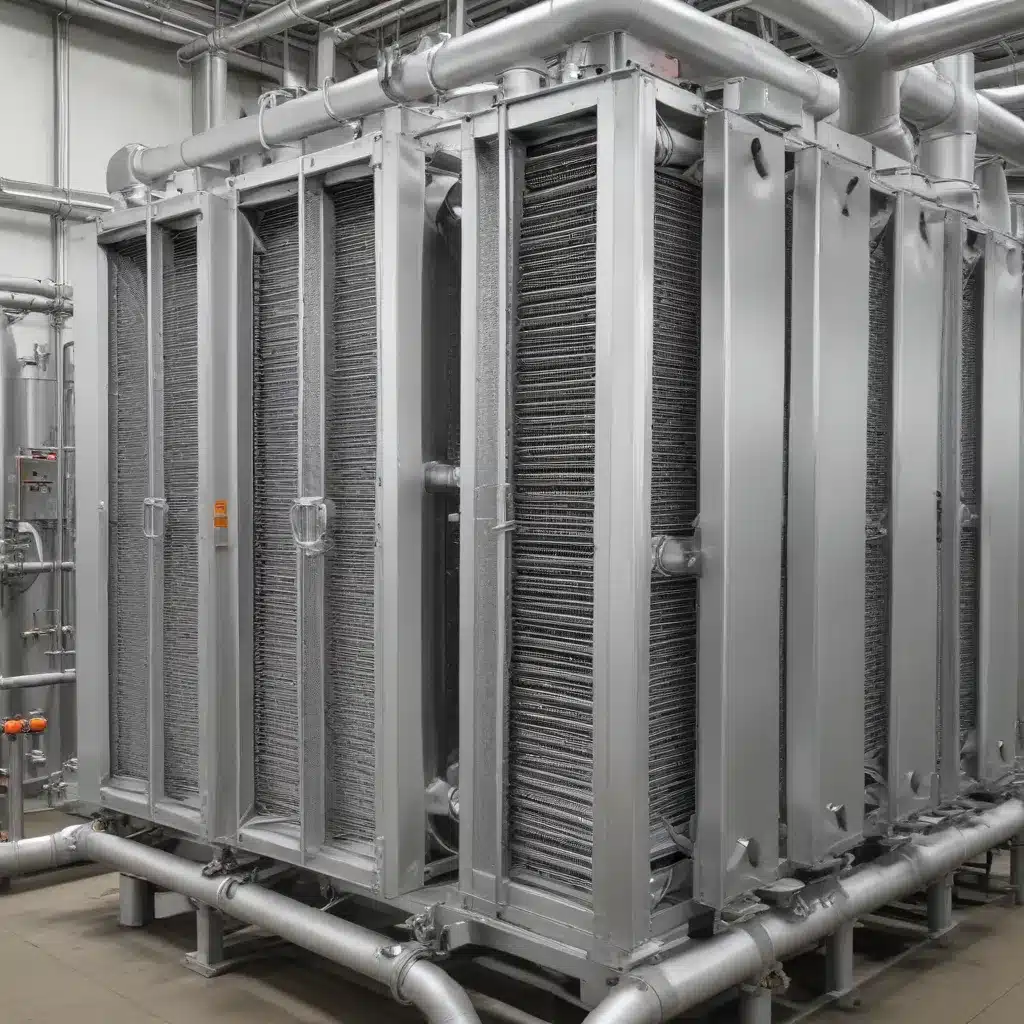
Ensuring Consistent Quality and Maximizing Operational Efficiency with Air-Cooled Heat Exchangers
Air-cooled heat exchangers play a critical role in the food and beverage processing industry, contributing to product quality, energy efficiency, and regulatory compliance. As seasoned experts in this field, we understand the importance of adhering to industry standards and best practices to maintain the reliability and performance of these essential heat transfer systems.
Adherence to AHRI Standards: The Foundation for Consistent Performance
The Air-Conditioning, Heating, and Refrigeration Institute (AHRI) has established comprehensive standards that provide a framework for the design, testing, and rating of air-cooled heat exchangers. By strictly adhering to AHRI standards, food and beverage processors can ensure that their heat exchanger systems consistently meet or exceed the specified thermal, mechanical, and safety requirements.
One key AHRI standard is AHRI Standard 410, which outlines the performance testing and rating procedures for forced-circulation air-cooling and air-heating coils. This standard ensures that air-cooled heat exchangers are properly evaluated for capacity, pressure drop, and efficiency, enabling processors to make informed purchasing decisions and accurately predict the performance of these critical components.
Additionally, AHRI Standard 430 provides guidelines for the construction and classification of air-cooled heat exchangers, covering factors such as materials, physical dimensions, and installation requirements. Adhering to these standards helps processors select the right equipment for their specific applications, ensuring optimal heat transfer and minimizing the risk of premature failure or operational issues.
Implementing Rigorous Maintenance Protocols
Consistent and diligent maintenance is crucial to maintaining the reliability and efficiency of air-cooled heat exchangers in the food and beverage processing industry. Processors should develop and strictly follow comprehensive maintenance protocols based on industry best practices and the recommendations of heat exchanger manufacturers.
Key maintenance activities include regularly cleaning the heat exchanger coils, inspecting for corrosion or fouling, and ensuring proper airflow across the heat transfer surfaces. Proper lubrication and routine checks of fans, motors, and other moving components are also essential to prevent breakdowns and unexpected downtime.
By implementing a proactive maintenance program, food and beverage processors can extend the service life of their air-cooled heat exchangers, maintain optimal thermal performance, and minimize the risk of product quality issues or disruptions to their manufacturing processes.
Compliance with Regulatory Standards
In the food and beverage processing industry, air-cooled heat exchangers must comply with a range of regulatory standards to ensure the safety and quality of the final products. Processors should be mindful of the following compliance requirements:
-
Sanitary Design Guidelines: The 3-A Sanitary Standards, Inc. (3-A SSI) has established guidelines for the hygienic design of food and dairy equipment, including air-cooled heat exchangers. Adherence to these standards helps prevent product contamination and ensures that heat exchangers can be effectively cleaned and sanitized.
-
Energy Efficiency Regulations: Many regions have implemented energy efficiency regulations for commercial and industrial equipment, such as the ENERGY STAR® program in the United States. Compliance with these standards helps food and beverage processors minimize their energy consumption and operating costs while reducing their environmental impact.
-
Environmental Regulations: Air-cooled heat exchangers may be subject to various environmental regulations, such as those governing the use of refrigerants, water consumption, and waste management. Processors must ensure that their heat exchanger systems comply with all applicable environmental regulations to avoid penalties and maintain their social license to operate.
By staying up-to-date with regulatory requirements and incorporating them into their heat exchanger selection, installation, and maintenance practices, food and beverage processors can protect their products, their operations, and the environment.
Optimizing Performance through Technological Advancements
The field of air-cooled heat exchanger technology is continuously evolving, with manufacturers introducing new designs, materials, and control systems to improve efficiency, reliability, and ease of maintenance. Food and beverage processors should keep a close eye on these technological advancements and consider upgrading or retrofitting their existing heat exchanger systems to take advantage of the latest innovations.
For example, the use of microchannel coil technology can significantly enhance the heat transfer capabilities of air-cooled heat exchangers, while the integration of advanced fan control systems and variable-frequency drives can optimize energy consumption and airflow based on changing operational demands.
Additionally, the incorporation of remote monitoring and predictive maintenance capabilities can help processors anticipate potential issues and proactively address them, reducing the risk of unplanned downtime and ensuring the ongoing reliability of their air-cooled heat exchanger systems.
Collaboration with Industry Experts
Navigating the complexities of air-cooled heat exchanger selection, installation, and maintenance can be a daunting task for food and beverage processors. By collaborating with industry experts, such as experienced heat exchanger manufacturers, engineering consultants, and service providers, processors can leverage the latest technical knowledge and best practices to enhance the performance and reliability of their heat transfer systems.
These industry experts can provide valuable guidance on the selection of the most appropriate air-cooled heat exchanger for a specific application, help with the design and integration of the system, and offer comprehensive maintenance and repair services to ensure optimal long-term performance.
Furthermore, by engaging with industry associations, such as the Air-Conditioning, Heating, and Refrigeration Institute (AHRI) and the International Institute of Ammonia Refrigeration (IIAR), processors can stay informed about the latest standards, regulations, and technological advancements in the field of air-cooled heat exchangers.
Conclusion
In the food and beverage processing industry, air-cooled heat exchangers are critical components that contribute to product quality, energy efficiency, and regulatory compliance. By strictly adhering to industry standards, implementing rigorous maintenance protocols, ensuring regulatory compliance, and embracing technological advancements, processors can enhance the reliability and performance of their air-cooled heat exchanger systems.
Collaboration with industry experts and active engagement with relevant associations further strengthen a processor’s ability to optimize the performance and longevity of their air-cooled heat exchangers, ultimately leading to improved operational efficiency, cost savings, and a stronger competitive position in the market.
For more information on enhancing air-cooled heat exchanger reliability and performance, visit the Air Cooled Heat Exchangers website.

